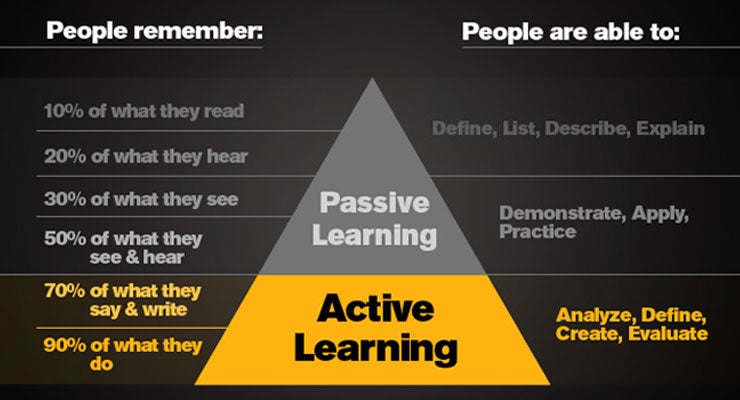In this week’s topic, we discussed active learning and passive learning. Active learning, as the name suggests, is an instructional strategy where students take an active role in their own learning, participating in activities and, reflecting on their learning(Sandercock, 2013).

Watching Active Learning Overview amazed me that the course designed with active learning has a 12% decrease in the failure rate. Active learning required students to get involved in the class not only sit back and listen to others’ ideas. This helps students to have a better understanding of the material, and reduce cognitive dissonance.

I found that a hybrid form of both online and face-to-face study can balance active learning and passive learning at this time. It’s a challenge to gather students into groups to have some active learning like group study and peer discussion in a face-to-face format during the covid-19 outspread. But educators can always find a way in using online platforms to achieve the same level of involvement and also access to passive learning.
Reference:
https://teachonline.asu.edu/2013/03/how-does-active-learning-support-student-success/
One response to “W9 Blog”
Hi Steven,
Taking knowledge from videos I watch on sales, and marketing psychology, I really embrace what your diagram portrays – the saying goes that “the average human has inertia”, and for individuals to lessen their blinders to take in anything you have to say, can take surprise, verbal physiology tricks, and especially in a marketing/graphic design scenario – contrast!
Similar to this, students need to be engaged to move from passive learning into active, and often this comes from engagement from an educator, like guiding questions…
Thanks for the post!
Darcy